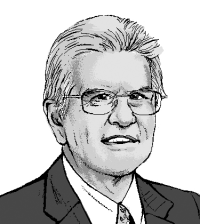Pilgrims of our time: Looking for miracles
Once upon a time, Europe lived in an age of faith, which found buoyant expression in the massive popularity of pilgrimage. Pilgrimage shrines flourished across Europe, some drawing millions of followers each year, and new pilgrimage destinations emerged regularly to meet the demand. Protestants and liberal Catholics might look askance at the piety practiced at such places (the veneration of mysterious Black Virgins and the ubiquitous healing miracles), but there was no doubt of the faith of the pilgrims.
Current believers might look back enviously at Europe’s golden age of pilgrimage. But in fact the golden age is now.
The sheer scale of modern European pilgrimage is startling. The world’s largest Marian shrine is Guadalupe in Mexico, which attracts 10 million visitors a year, but several European centers draw pilgrims on nearly that scale. And just since the 1970s, those numbers have grown substantially. Lourdes, which drew about a million visitors each year in the 1950s, now records closer to 6 million annually (50,000 might pass through on a quiet day). Each year, Jasna Góra in Cze¸stochowa, Poland, attracts 4 or 5 million to see a picture of the Virgin Mary supposedly drawn from life by St. Luke the Evangelist. Each year, around 15 percent of Poles make a pilgrimage to some site. Four million believers visit the site of Mary’s apparition at Fátima in Portugal. Europe as a whole has probably 500 images of the Black Virgin, and many are venerated at pilgrimage sites like Altötting in Bavaria and Montserrat in Spain.
Besides the Virgin Mary, many other saints attract the faithful. Just since the late 1980s, pilgrimage has enjoyed a breathtaking revival at Santiago de Compostela in Spain, which now attracts some half a million pilgrims a year (and closer to a million in special holy years). Shrine-rich Italy offers Rome or Assisi, Padua and Turin. So popular are such huge centers that few observers even note the tens of thousands who attend healing shrines that are of merely local significance. At Sarsina, pilgrims seek healing for illnesses of the neck or throat by having the iron collar of St. Vicinus clamped around their necks. Even in Europe’s supposedly secular heart, on the German-Dutch frontier, Mary’s shrine at Kevelaer draws 800,000 visitors a year.
While we might see such sites as representing a medieval mind-set, a striking number are either newly founded or recently revived (many under the papacy of Pope John Paul II). Spiritual resistance to communist tyranny spawned one great new shrine in Lithuania, on the Hill of Crosses, Kry iu Kalnas. Just since 1981, over 30 million have visited the Bosnian village of Medugorje, to hear the messages that the Virgin reportedly addresses to the faithful.
Other centers represent a more innovative and ecumenical kind of spirituality. Every summer, 100,000 teenagers or young adults visit the French monastic center of Taizé for a weeklong sampling of its distinctive spirituality, with its meditative hymns and devotions. Pilgrimages and retreats also focus on a new wave of charismatic Catholic centers, like Paray-le-Monial in France. Long-dormant shrines in Britain and France have been revived by the patronage of Christian migrants from Africa, Asia and the Carib bean.
Since the fall of communism, pilgrimage has also revived in the Orthodox world. The believer seeking spiritual direction can once again visit such historic landmarks of Russian faith as Sergiyev Posad and Valaam, or even to Optina Pustyn, which in its day welcomed Tolstoy and Dostoevsky.
We must be careful in drawing conclusions from mere numbers. We can’t just add together the visitors to various shrines, since there is much overlap. Today, as in the era of Chaucer’s Canterbury Tales, some people are serial pilgrims. And as in Chaucer’s day, it is all but impossible to sort out tourists from pilgrims (which was the Wife of Bath?). But even when we make all allowances, we see evidence of a pilgrimage boom that contradicts a great deal of received wisdom about Europe being a place where Christianity is dead or dying.
By all standard measures, institutional churches are in steep decline across most of Europe. Far fewer people attend churches, and the number of religious vocations has collapsed. But the popularity of pilgrimage points to an unsuspected kind of spiritual hunger, which may be a reaction to changes within the churches. Perhaps we are seeing a side-effect of the reforms of the Second Vatican Council and the reduction of the sense of mystery or spiritual power within ordinary services. When people cannot find miracle in their parish churches, they seek it elsewhere. However we interpret the pilgrimage phenomenon, European Christianity is not as dead as it may appear.





